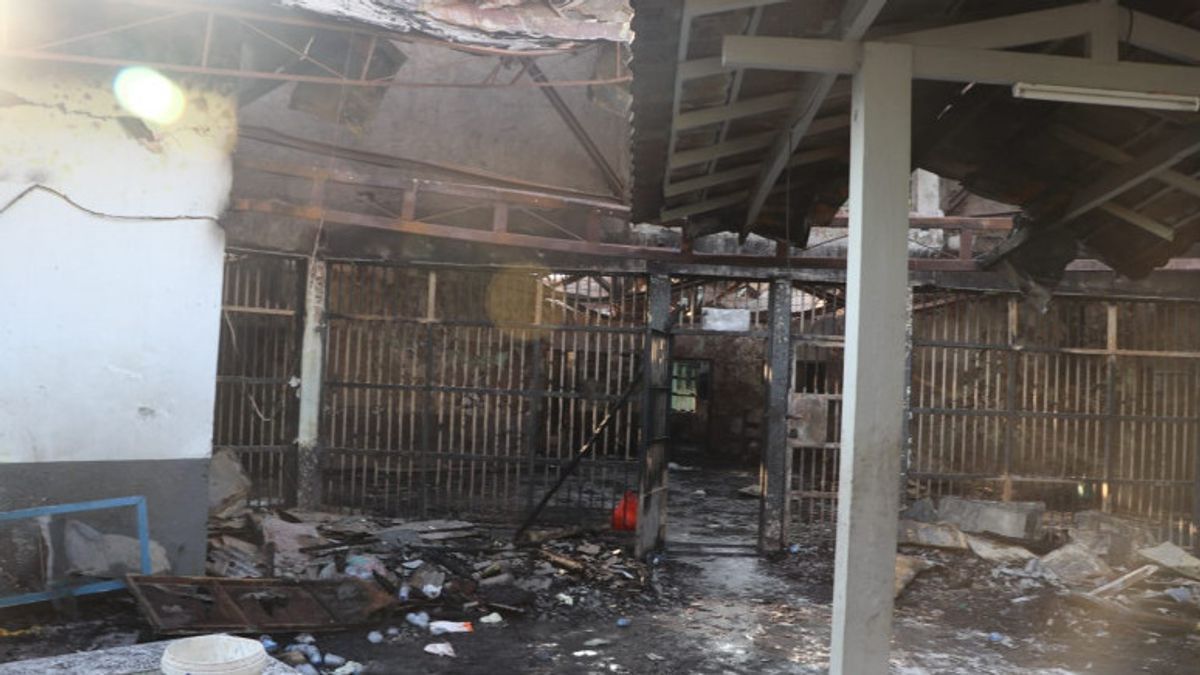
JAKARTA - A number of families of victims of the fire at the Class I Penitentiary (Lapas) in Tangerang, Banten, accompanied by several legal aid agencies came to the Office of the National Human Rights Commission (Komnas HAM) to complain about the case that killed 49 inmates.
"We report the findings from the testimony of the victim's family and report the findings to Komnas HAM," said Ma'ruf Bajammal, Representative of the Advocacy Team for Class I Tangerang Prison Fire Victims, in Jakarta, Thursday, October 28.
The complaint began when the Tangerang Class I Prison Fire Victims Advocacy Team consisting of the Community LBH (LBH), Jakarta LBH, Imparsial, and Tangerang NU LPBH opened a complaint post.
During that time, he said, his party received nine complaints and seven of them gave the power to ask for legal assistance.
From the confessions of the families of the victims, the Advocacy Team for the Class I Tangerang Prison Fire Victims found at least seven important points from this heartbreaking tragedy.
First, there is an unclear process of identifying the bodies of the deceased victims. In other words, the identification carried out was judged not to be transparent. In fact, until the victim was buried there was no clear information received by the heirs.
"So what is the basis for identifying the victim," said Ma'ruf.
The second point, namely the non-disclosure of the delivery of the bodies of the deceased victims. When the body was handed over, the family wanted to see it but was advised by officers not to see it.
The families of the victims, especially those who complained, insisted that they wanted to see one last time but couldn't. Furthermore, the team found the unfitness of the victim's coffin which was only made of plywood.
"According to the victim's family, the coffin is not worthy of being a coffin," he said.
In fact, there are families of victims who are forced to buy their own coffins because they think the coffins provided by the government are not suitable for the funeral of their family members.
The fourth finding was that there was an indication of intimidation when the heirs signed the administrative letter for taking the victim's body. When going to sign the letter, the victim's family was asked to finish it as soon as possible.
"On that basis, we saw an attempt at intimidation during the signing process for the handover of the bodies," he said.
The fifth finding was that there was an attempt to silence the victims' families so that they would not sue any party for the Tangerang Class I prison fire. This was confirmed by a letter that must be signed by the heirs.
The sixth point, the team found that there was no continuous psychological assistance carried out by the government, in this case the Ministry of Law and Human Rights (Kemenkumham), after the body was handed over.
As a result, there are families of victims who until now when they hear the word burn or see something being burned feel traumatized or not strong.
Point kseventh, related to the giving of mourning money worth Rp. 30 million, he judged that it was not enough at all.
"The money was only used for consolation or praying for the victim's family. In fact, some were forced to strike for post-funeral activities," he said.
The English, Chinese, Japanese, Arabic, and French versions are automatically generated by the AI. So there may still be inaccuracies in translating, please always see Indonesian as our main language. (system supported by DigitalSiber.id)










